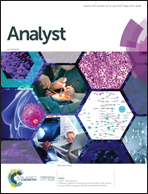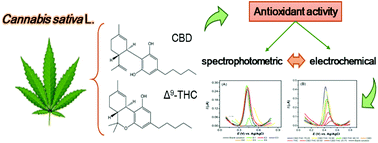 “Call it cannabis, not marijuana or weed.
“Call it cannabis, not marijuana or weed.
It has been more than 17 years since the Canadian prohibitory regulations on the use of medical cannabis began to ease and more than 17 weeks (more than 6 months by the time of publication) since the Cannabis Act (Bill C-45) became law. Cannabis use for medical purposes has been part of the historical record and medical writings for millennia. However, it is only in the last 30 years that the workings of the human endocannabinoid system have been described and its receptors discovered. Amazing as all of those developments have been, the challenge of reintegrating cannabis into the science of modern medicine—and particularly care for patients with cancer—is a need whose time has come.
Surveys inform us that patients with cancer are using cannabis to manage symptoms related to cancer and cancer treatment. More concerning is that their use is for a medical need occurring outside the confines of modern cancer care, with patients accessing their cannabis from friends and family, and often from casual or unlicensed suppliers. Beliefs in the benefits of cannabis—for its yet unfounded therapeutic potential—are commonly held or supported by poor-quality evidence. Patients and their caregivers are inundated with media stories about a budding industry and its mergers and acquisitions while it grows to meet a need for what is regarded by some as overlooked and undertreated ailments. How should oncologists and the oncology team, trusted as the informed and compassionate advocates for their patients, reconcile the overwhelming public attention being given to this product—growing more, creating new routes of administration, and reaching for new uses—with the work needed to further the science of cannabis as it pertains to cancer care?
The onus is on us, the community of cancer care providers, to act.
Therapeutic and clinical developments in oncology are resulting in improvements in the survival of many patients. Costly immunologic therapies are promising and are being implemented for a variety of cancers. New science about the microbiome, about cancer detection, and about targeted therapies are being researched. And yet, contrasted against those celebrations of scientific ingenuity are the glaring gaps in the work pertaining to cannabis to settle unsubstantiated claims and anecdotal observations of this elixir for the ages. As clinicians and scientists, we must work to generate the needed evidence-based outcomes and to document or dispel the potential interactions and sequelae between cannabis and prescribed cancer treatments. “There are in fact two things, science and opinion, the former begets knowledge, the latter ignorance”.
The frameworks to lead this charge are ours to create. The current legal framework is focused on issues of access and control to regulate production, distribution, and sale. The medical framework for cannabis research is more tenuous, concentrated in silos of expertise as a result of the previous prohibitory environment. The study of cannabis is ripe for development, but even intra-institutional endeavors require help. The machinery of science requires some assembly and repurposing to address the new challenges.
If the current and future oncology landscape is a challenge for those working in cancer care, we must remember that patients deserve our compassion as they attempt to navigate this emotional journey with or without cannabis. More importantly, they need our support and deserve to see us take leadership in cannabis research. Oncologists who have expertise in both the clinical and scientific worlds must inform the necessary work. We must be the architects of its design, building bridges to industry and patients, while engaging our academic institutions.
“Coming together is a beginning, staying together is progress, and working together is success”.”
https://www.ncbi.nlm.nih.gov/pmc/articles/PMC6588059/



 “Currently, there are no approved pharmacotherapies for addiction to cocaine and other psychostimulant drugs. Several studies have proposed that
“Currently, there are no approved pharmacotherapies for addiction to cocaine and other psychostimulant drugs. Several studies have proposed that  “It is becoming clear that post-traumatic stress disorder (PTSD) is not simply a psychiatric disorder, but one that involves pervasive physiological impairments as well. These physiological disturbances deserve attention in any attempt at integrative treatment of PTSD that requires a focus beyond the PTSD symptoms themselves. The physiological disturbances in PTSD range over many systems, but a common thread thought to underlie them is that the chronic effects of PTSD involve problems with allostatic control mechanisms that result in an excess in what has been termed “allostatic load” (AL).
“It is becoming clear that post-traumatic stress disorder (PTSD) is not simply a psychiatric disorder, but one that involves pervasive physiological impairments as well. These physiological disturbances deserve attention in any attempt at integrative treatment of PTSD that requires a focus beyond the PTSD symptoms themselves. The physiological disturbances in PTSD range over many systems, but a common thread thought to underlie them is that the chronic effects of PTSD involve problems with allostatic control mechanisms that result in an excess in what has been termed “allostatic load” (AL). “Given the limitations of prescription antidepressants, many individuals have turned to natural remedies for the management of their mood disorders.
“Given the limitations of prescription antidepressants, many individuals have turned to natural remedies for the management of their mood disorders. “Current pharmacotherapy of Parkinson’s disease (PD) is palliative and unable to modify the progression of neurodegeneration. Treatments that can improve patients’ quality of life with fewer side effects are needed, but not yet available.
“Current pharmacotherapy of Parkinson’s disease (PD) is palliative and unable to modify the progression of neurodegeneration. Treatments that can improve patients’ quality of life with fewer side effects are needed, but not yet available. “Osteoporosis is a skeletal disease with decreased bone mass and alteration in microarchitecture of bone tissue, and these changes put patients in risk of bone fracture. As a common symptom of osteoporosis and complication of osteoporotic fracture, chronic pain is a headache for clinicians. Nonsteroidal anti-inflammatory drugs (NSAIDs), selective COX-2 inhibitors and opioid drugs can temporarily reduce osteoporotic pain but have relevant side effects, such as addiction, tolerability and safety. The review summarized the recent advancements in the study of CB receptors in osteoporosis and osteoporotic pain and related mechanisms.
“Osteoporosis is a skeletal disease with decreased bone mass and alteration in microarchitecture of bone tissue, and these changes put patients in risk of bone fracture. As a common symptom of osteoporosis and complication of osteoporotic fracture, chronic pain is a headache for clinicians. Nonsteroidal anti-inflammatory drugs (NSAIDs), selective COX-2 inhibitors and opioid drugs can temporarily reduce osteoporotic pain but have relevant side effects, such as addiction, tolerability and safety. The review summarized the recent advancements in the study of CB receptors in osteoporosis and osteoporotic pain and related mechanisms. “Cardiac disease is accounted as the leading cause of worldwide morbidity and mortality, mainly in association with induction of inflammation and oxidative stress. The disease is characterized by the overproduction of reactive oxygen and/or nitrogen species (ROS/RNS), and reduced antioxidant capacity.
“Cardiac disease is accounted as the leading cause of worldwide morbidity and mortality, mainly in association with induction of inflammation and oxidative stress. The disease is characterized by the overproduction of reactive oxygen and/or nitrogen species (ROS/RNS), and reduced antioxidant capacity. “Call it cannabis, not marijuana or weed.
“Call it cannabis, not marijuana or weed.